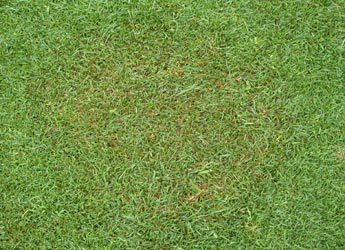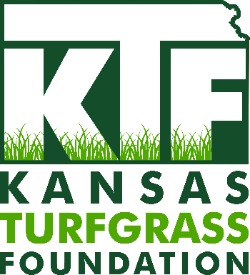Brown Patch (Rhizoctonia solani)

Brown patch is caused by a fungal pathogen (Rhizoctonia solani) that affects all cool season turfgrass (especially tall fescue and perennial ryegrass). Under favorable environmental conditions brown patch symptoms may develop overnight. In home lawns brown patch development results in a circular olive green stain ranging from 4 to 12 inches in diameter. Leaf blades within the patch turn brown after infection. A gray-white band (often called a smoke ring) may be evident at the perimeter of active patches. individual lesions with brown margins occur on all affected grass species but are most evident on tall fescue. The fungus survives in thatch and turf debris between periods of activity.
Occurrence
Brown patch is a disease of summer. The pathogen becomes active during periods of hot, humid weather when dew periods exceed 10 hours and nighttime temperatures remain above 65°F. Also, outbreaks will be more severe when nitrogen fertility is excessive during disease-favorable weather.
Non-Chemical Control
Brown patch can cause serious damage to tall fescue and perennial ryegrass lawns under certain conditions. The disease will result in thin, poor quality turf as leaves and tillers are consumed by the fungus. However, brown patch is considered a foliar disease that does not affect crowns and roots. There fore, areas of damaged turf should recover upon the return of weather that favors turf growth, especially if turf is not further damaged by traffic and/or other stresses. Avoiding summer fertilization and early evening irrigation will help limit the extent of brown patch development. Improving air circulation can also help suppress brown patch out breaks.
Chemical Control
Brown patch can cause serious damage to tall fescue and perennial ryegrass lawns under certain conditions. The disease will result in thin, poor quality turf as leaves and tillers are consumed by the fungus. However, areas of damaged turf should recover upon the return of weather that favors turf growth, especially if turf is not further damaged by traffic and/or other stresses. Fungicides are available but should not be necessary for residential lawns. If the homeowner decides to pursue the chemical control option, then a professional lawn care service should be contracted for the application.



